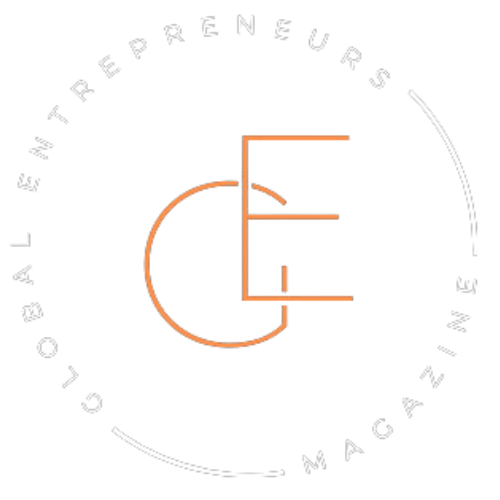He had the kind of idea that keeps you up at night.
Not because it was stressful—because it was thrilling. The kind of concept that you know, deep down, could change an entire industry. He’d scribbled it on a napkin over coffee. Then onto a whiteboard. Then into a pitch deck that looked so good it made you believe the future was already here.
But six months passed. The pitch deck stayed in Dropbox. The whiteboard faded. And the napkin, well, who knows.
It wasn’t that he didn’t care. He cared too much. He wanted everything to be right. Every angle thought through. Every risk accounted for. Every word, bulletproof. And while he waited for perfect, someone else built something good enough—and shipped it.
This is where most stories stall. Not in the absence of vision, but in the hesitation to begin. It’s not a lack of inspiration that keeps most entrepreneurs stuck. It’s the fear that they’re not yet ready to execute.
But the ones who make it? They start anyway.
They don’t wait to feel ready. They move while the idea is still hot, while the questions still outnumber the answers. They treat vision like a promise and execution like a discipline. And somehow, between the two, they build what others only talk about.
So how do they do it? How do the best entrepreneurs turn “someday” into something real?
That’s the gap we’re about to explore.
Why Big Ideas Are the Easy Part
Ideas are seductive.
They arrive like flashes of genius—in the shower, during a walk, at 2 a.m. when you’re too tired to question them. They feel weightless and powerful at the same time. And when you first talk about them, people lean in. They nod. They say things like, “That could really work.”
But here’s the truth no one likes to say out loud: ideas are cheap.
Not worthless—but abundant. Every entrepreneur you know probably has a Notes app filled with “next big things.” Startup graveyards are full of brilliant visions that never saw daylight, not because they weren’t good, but because they never got built.
The hard part isn’t coming up with something meaningful. The hard part is figuring out what to do with it when the adrenaline wears off. After the brainstorm fades, and it’s just you… facing an empty calendar, a full inbox, and the slow grind of making the thing real.
That’s when most people start looking for shortcuts. A silver bullet. A partner who’ll “handle the operations.” A course, a coach, an excuse.
But execution doesn’t wait for permission. And neither do the people who are serious about their vision.
They sit down. They get quiet. And they work. Idea by idea. Line by line. Brick by brick.
It’s not glamorous. But that’s exactly why it works.
The quiet skill no one talks about
Some founders talk like artists. Others move like engineers. But the ones who consistently build? They carry a rare, quiet skill that doesn’t get headlines: they know how to make abstract ideas usable.
Not just interesting. Not just visionary. Usable.
They see connections between things that don’t obviously fit together. They map out messy, ambitious ideas into step-by-step blueprints without killing the spirit behind them. It’s not magic—it’s operational creativity. And it’s wildly underrated.
One founder we worked with couldn’t draw up a polished pitch to save her life. But she had notebooks full of timelines, processes, and customer workflows. She didn’t chase applause. She built momentum. And while others were still refining their “why,” she was already on her third product iteration.
This kind of thinking doesn’t scream brilliance. It doesn’t photograph well. But it’s what keeps businesses alive after the hype fades.
Ideas don’t die because they’re bad. They die because no one takes the time to figure out how they’ll actually work. The best entrepreneurs don’t just dream—they architect.
Start before you’re ready

Ask any founder what held them back in the beginning, and you’ll hear the same phrase again and again: I wasn’t ready.
It sounds responsible. Careful. Thoughtful. But more often than not, it’s just another way of saying I was scared to start ugly.
There’s this myth that successful entrepreneurs begin with certainty. That they had the perfect plan, the right timing, the flawless prototype. What really happened? They launched messy. They figured it out halfway in. They adjusted faster than they were comfortable with.
One founder we met had zero experience in her industry. No funding. No press. Just a stubborn belief that she could build something people needed. She sketched out a landing page, put a button on it, and said, “Let’s see if anyone clicks.” Within a week, she had her first customers—and a mountain of problems to solve. That’s how it started.
Starting rough isn’t a lack of strategy. It’s a decision to trade perfection for momentum.
Ideas evolve in motion. Not on paper. Not in your head. Not in the Google Doc that never gets shared.
You don’t need more time. You need a first step.
The team factor: who you work with matters more than you think
Some entrepreneurs mistake solitude for strength. They think they have to carry the entire vision themselves—every task, every fire, every moving part. And for a while, they do. Until they hit a wall they can’t push through alone.
It’s never about effort. It’s about capacity. Vision needs more than one pair of hands to turn into something real.
The founders who make real progress tend to share one trait: they’re good at finding the right people to build with. Not just friends. Not just believers. Builders. People who know how to take an idea and run with it without needing constant translation.
There’s a story about a product-focused founder who nearly shut down his startup after two failed launches. He had vision but no one to execute it with. Then he found his opposite—a COO who lived for logistics, loved fixing chaos, and didn’t care about the spotlight. Within six months, they weren’t just surviving. They were scaling.
The right team doesn’t dilute your vision. It sharpens it.
You don’t need to do everything. You need to find people who can do the things you can’t—and trust them enough to let them.
Feedback over fantasy
Execution isn’t about proving your idea was brilliant. It’s about being willing to change it.
The smartest founders listen more than they pitch. They obsess over how people use their product, not how it was supposed to be used. That shift—from fantasy to feedback—is what keeps a business alive after the honeymoon ends.
There was a founder who spent months building the perfect app. Sleek interface. Clean code. Every feature you could want. But when they finally launched, users didn’t do what they expected. They ignored the dashboard. They skipped the tutorials. They only used one button.
Instead of doubling down, the founder scrapped half the roadmap and focused on what actually worked. Within weeks, the app was growing—because it was doing something people needed, not just something the founder believed in.
This is the part that breaks a lot of entrepreneurs: realizing the market isn’t here to validate your dream. It’s here to show you where the real value is hiding.
Feedback isn’t criticism. It’s direction.
Systems over sprints
The hustle gets all the headlines. The all-nighters, the caffeine-fueled launches, the dramatic pivots. But that’s not what keeps a company standing.
What does? Boring, consistent systems.
One founder we spoke with hit six figures without a single viral post or media feature. No splashy launch. No secret growth hack. Just one habit: every morning at 8 a.m., she wrote emails to her customers. Rain or shine. For two years straight.
Another founder took the opposite route. Built fast, hired faster, scaled too soon. Burned out. Shut down. Not because the idea was bad, but because the engine couldn’t keep up with the speed.
Execution isn’t a race. It’s a rhythm. Systems aren’t glamorous, but they’re what turn good weeks into great quarters. They create space for creative decisions because they’ve already handled the repetitive ones.
Want to know who’s going to outlast the hype? Look for the person who’s not sprinting. Look for the one who’s building something they can sustain.
Vision revisited through the lens of action
The founder from the beginning—the one with the big idea and the untouched pitch deck—finally got tired of waiting.
One night, after yet another delay, he opened his laptop and built a crude version of his product using free tools and a little borrowed code. No investors. No polish. Just momentum.
The first version was rough. The second was better. The third started getting traction.
Today, that same founder doesn’t spend his time perfecting pitch decks. He spends it responding to real customers. Hiring real teammates. Shipping real features. His idea didn’t fade—it evolved. Because he finally stopped treating it like a masterpiece and started treating it like a work in progress.
This is what separates the dreamers from the doers.
Not better ideas. Not better timing.
Just the willingness to begin—and the discipline to keep going.




